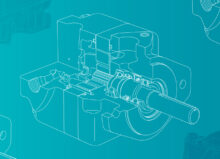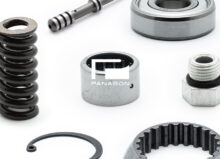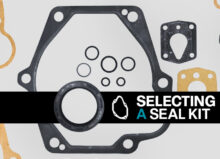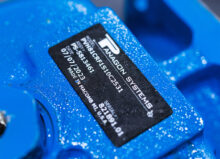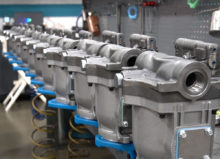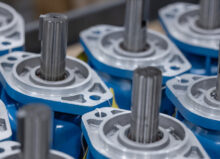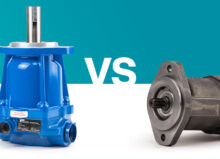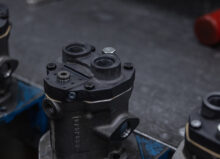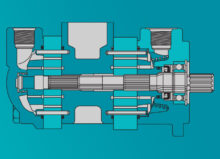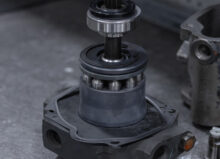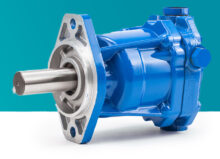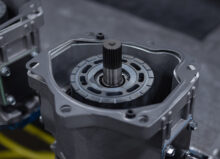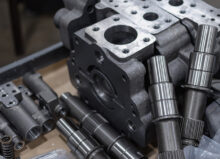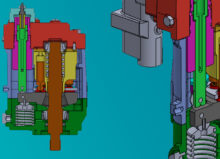How to Restart a Hydraulic System Following a New Pump Installation
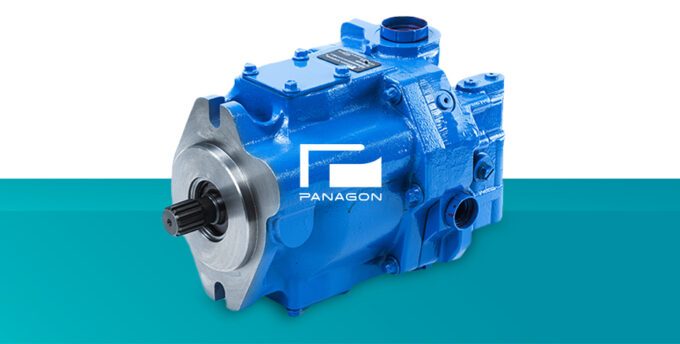
For years, Panagon Systems has helped many machine builders and users restart hydraulic systems after new or rebuilt pumps have been installed. We have provided this assistance both before and after the restart is initiated. Often, after a failed attempt, companies wish they had taken the opportunity to go over the basics before the restart was attempted.
While the start-up procedure is known, sometimes the pump has run so long without trouble that the maintenance department is not well-practiced in restarting the system with the new pump. This process is actually different from a daily restart when everything is the same as when the system was last shut down.
Often, when the previous pumps failed, the extensive debris from that failure went somewhere, and that somewhere is usually the lines, components, and reservoir of the existing system.
We’ve created this practical step-by-step guide to help you ensure a successful restart and a healthy hydraulic system.
1. Clean & Refill the Reservoir
First, remove hydraulic oil from the reservoir using a filter cart. Clean the reservoir and flush the hydraulic lines and hoses. If a hose appears physically worn, this is often a good time to replace it, as the system is already drained.
Return used or new oil to the reservoir with a 5-micron filter cart. If you’re reusing existing fluid, it should be recirculated in the reservoir with the filter cart for at least two hours.
New mineral-based hydraulic oil should have anti-wear, anti-foam, and anti-rust additives (AW-68 or AW-32). You should also recirculate new fluids and use the filter cart to clean any debris in the reservoir.
2. Replace Filter Elements
Use “beta-rated” elements. 10 micron is acceptable for a system operating under 1,000 PSI, while 5-micron filters are preferred for higher-pressure systems.
Hydraulic systems with servo or proportional valves should use finer filtration—we recommend 3-micron filters.
3. Check the Main System Relief
If present, check the main system relief to ensure the main spool and control piston are free of debris, which would prevent their proper operation. Manufacturers have technical data sheets to assist in this check.
4. Fill the Hydraulic Pump Housing
Before starting the pump, fill the hydraulic pump housing with filtered, clean oil. If you have a pump with a case drain, fill the pump using the “top” case drain port. While filling, allow air to escape from the housing. This ensures the pump housing is actually full of oil.
5. Check the Pump’s Rotation
Check the pump for correct rotation (view the pump from the shaft end). Typically, when viewed from the shaft end, right-hand rotation is clockwise, and left-hand rotation is counterclockwise.
6. Set the Compensator & Relief Valve
Set the compensator and/or relief valve to a low-pressure setting for the initial start. After the pump is running, the compensator or relief valve can be adjusted to the desired system pressure. If you have both a relief valve and a compensator, the relief valve should be set at least 15% higher than the compensator setting. Note: Fixed-volume pumps have no compensator, only a system relief valve.
After start-up, do not set any pressure settings higher than necessary for proper machine operation. This will avoid overheating and help extend the life of all system components.
7. Start the Pump
When first started, pumps tend to be “noisy” until the air trapped in the lines and components clears the system. If the noise persists, shut down the system and check the suction-side plumbing for fittings that might be allowing air to enter the system.
Re-fill (top off) the reservoir to “full” level after the pump is running and all lines and hoses are full.
Get Assistance From Panagon Systems
Panagon Systems has experienced team members who help you start and troubleshoot your hydraulic system. Call (586) 786-3920 or complete our online form to speak to one of our experts.
You can download our complete start-up guide here.






